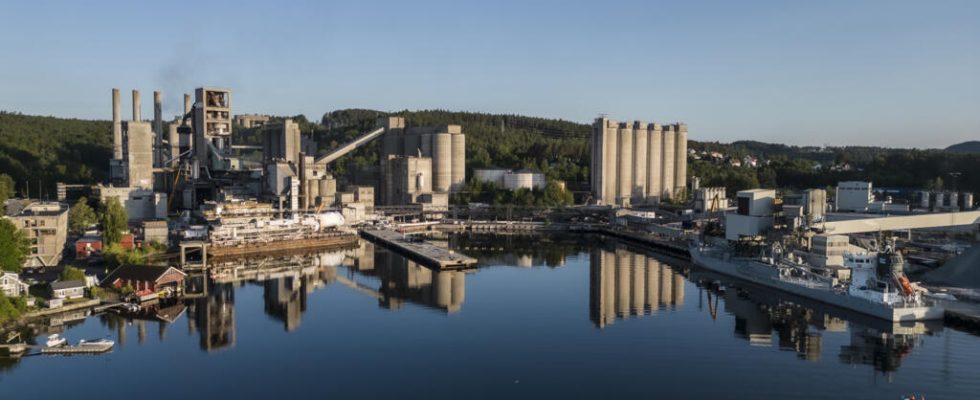Last episode of our series dedicated to the initiatives of five companies to green their activities, with the German cement manufacturer Heidelberg materials, which is testing carbon capture and storage in Norway. The cement industry is in fact faced with a problem that no other industry faces on this scale: its manufacturing process is very difficult to decarbonize, while cement is the most consumed material in the world, for some reasons. 150 tons per second. On the other hand, demand for cement could increase by 45% by 2050.
On site, a 100 meter high tower, taller than the Big Ben tower in London, rises above the fumes from the cement factory. It should be used to capture half of the plant’s emissions, or 400,000 tonnes per year according to forecasts. Heidelberg Materials’ communications manager for Norway, Tor Halvorsrud, is full of praise:
“ This is where the magic happens ! Our goal is to capture 400 000 tonnes of CO2 per year, which represents half of the cement plant’s emissions. It’s a huge volume actually. You can imagine it when you see these large storage tanks which will be filled with 5 000 m³ CO2. This will take up space, even though the CO2 will be compressed. »
The German group, the second largest cement manufacturer in the world, has therefore invested in the industry’s first large-scale carbon capture and storage pilot project. Heidelberg Materials is largely helped by the Norwegian state, which is at the forefront of this very energy-intensive technology.
“ It takes a lot of energy to capture CO2 », continues Tor Halvorsrud, « and so, what we have done here is that we will recover the waste heat generated by the production of cement to operate the capture process. The CO2 emissions from the factory will be captured by this tube called the absorber. Then, the gases are cleaned of dust and impurities, and they are transferred to the desorber before becoming pure CO2 “.
The CO2 is then compressed, before becoming liquid, and being transported by ship at -26°C to landfill sites in the North Sea. A process which requires a significant investment: 400 million euros for the first phase. The Norwegian government contributes 85% of this sum.
If carbon capture is one of the solutions for the cement industry, other processes have been tested in recent years, such as the use of alternative materials. On a global scale, cement manufacturing represents 7% of CO2 emissions, three times more than commercial aviation.
